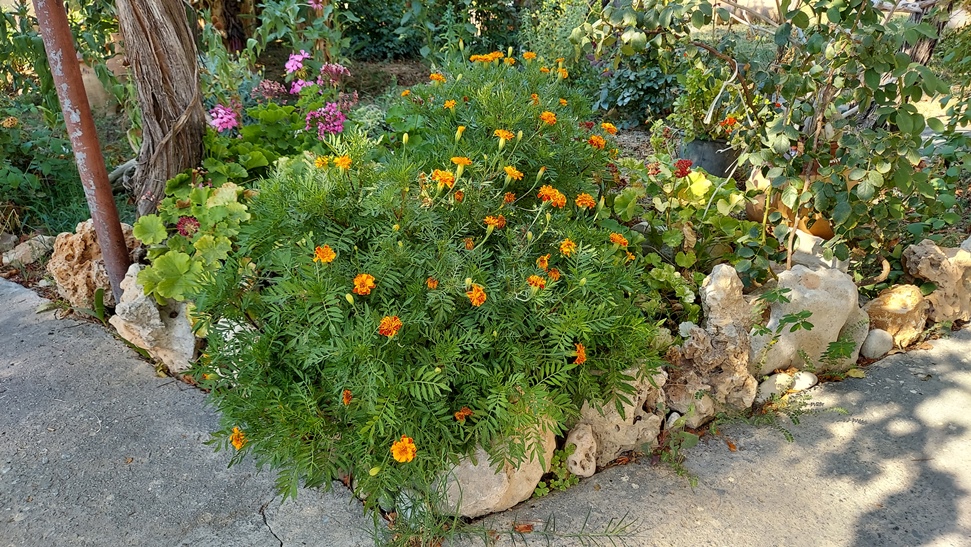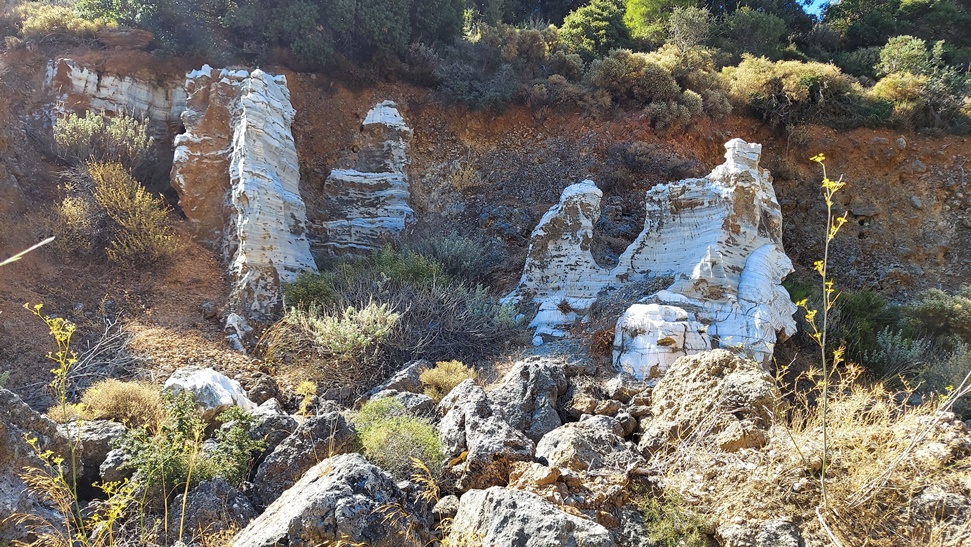After being invited by Sitia’s Geopark to present “Waterways & Stories on the E4 path and the Geoparks of the Eastern Mediterranean” with the acronym “Waterways,”…
…I once again found myself in the most beautiful side of Crete, Sitia. This time, I was representing “Greek News and Radio FL.”
I cannot express enough gratitude for the outstanding Cretan hospitality extended to us by the explorers, including the coordinator of the Sitia’s Geopark, Vagelis Perakis, the secretary Eleftheria Koumendakis, and the archaeologist Despina Koinaki. During our visit, we experienced and learned about the land of Sitia in ways that few know but that everyone should see and hear.
Our journey included a tour in the famous European E4 path, brimming with natural beauty and history. We also visited villages and settlements along the path, such as Dafni, which warmly welcomed us with rakis and delicious treats prepared for their upcoming festival. We explored the village of Handra, with its ancient Ottoman Hamam ruins still preserved, and then Voila, an abandoned village located in the Community of Handras. In Voila, a Venetian tower stands, adorned with a Turkish epigram dating back to 1153.
According to local tradition, the tower belonged to one of the fiercest janissaries, Chin-Ali or Genali. Just south of the tower, a deserted church known as the Church of Genali can be found. The village also boasts two fountains adorned with Turkish inscriptions.
Our journey continued to the village of Sikia, where we rested in the village square and indulged in excellent traditional flavors at the Raki-Meze tavern. This stop is a must for visitors who appreciate good traditional food made from locally sourced ingredients.
Starting at Skalia, a 3.5 km walking path with easy access and breathtaking views led us to the refreshing spring of Ano Zakros, surrounded by pines, cypresses, and oaks, with a steady flow of water even in the dry season.
Another delightful experience awaited us at the square of Ano Zakros, where we enjoyed traditional offerings from “O Pontios” cafe and exquisite delicacies from the “Melion” Women’s Cooperative. Our day concluded with a visit to the remains of the Minoan palace of Kato Zakros and a swim at its beautiful beach, under the enchanting Augustus full moon.
Throughout our journey, we saw, tasted, and exchanged knowledge and impressions with our fellow members of the journalistic group. We were accommodated in the guest apartments of Dimitras Galetakis at “Dimitras Apartments,” where we savored Dimitras’ amazing fried Sitian “cheesepies” stuffed with sour cottage cheese. The talented Diamanti Daskalaki from Kafe-Cafe treated us to delightful “Nerates” drizzled with local honey. Sitia once again captured our hearts, and we fell in love with it even more. We were treated to delicious food at Sitia Beach restaurant, tasted unforgettable traditional food, cooked by my favorite local cook Gogo at the Inodio restaurant.
The hosts and organizers of the event, along with the 50 supporters of the Geopark Sitias (identified by the Geopark flag displayed at their businesses), became more than just hosts; they became a new family we look forward to reuniting with as soon as possible.
Armed with the knowledge gained from the Geopark and the Water paths, we depart with the promise of returning in the near future.
On behalf of Greek News and Radio FL, Tony Kavalieros
The following information is the goal and desire of the Sitia’s Geopark and its Program Coordinator Vagelis Perakis.
• Improving the attractiveness and increasing the visitation of the intervention areas in Crete and Cyprus on the E4 European Long Distance Path, mainly mountainous areas that are disadvantaged in terms of economic development and are more prone to climate change
• Increasing the awareness of citizens – visitors – students in matters of acquaintance, familiarization and protection of water resources as well as cultural heritage in the intervention areas….
• To preserve and improve the environment in specific areas of intervention through pilot management and restoration of disturbed ecosystems within the Geoparks of the consortium and on E4,
• Mapping, recording, highlighting, promoting and developing points of interest in areas of natural and cultural value through appropriate actions
The end result of the project will be the strengthening of the mountainous and disadvantaged areas and settlements that are crossed by the E4 through the improvement of their visibility and the increase of traffic. Particular emphasis will be placed on those areas which, due to their geographical location, receive the least rainfall and are expected to be more affected by climate change.
In addition to increasing traffic, the development of educational materials will raise awareness among both visitors and students about the protection, monitoring and management of water resources. Through the scientific & educational tools, the interactive models highlighting waterways and the museum apparatus, it is expected to increase the awareness of the citizens in matters of acquaintance, familiarization and protection of water resources and to highlight the cultural heritage in the intervention areas.
As an expected result of the project is the preservation, improvement and promotion of cultural monuments and natural environment in the intervention areas through the pilot management and restoration of disturbed ecosystems within the Geoparks and on the path E4.
Vagelis Perakis




















Recent Comments